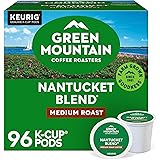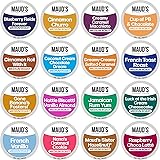Mastering Your French Press: Beyond Basic Brewing
While an estimated 9% of Americans regularly brew their coffee with a French press, many users may only scratch the surface of its capabilities. If you’ve been wondering how to get more out of your French press than just a standard cup of joe, the accompanying video provides an excellent starting point. However, this article will delve deeper, exploring advanced tips and techniques for brewing hot coffee, crafting delicious cold brew, and even creating frothed milk for latte-style drinks, all from this versatile device.
Understanding Your French Press: The Fundamentals
The simplicity of the French press belies its potential. Essentially, a French press operates on the principle of immersion brewing, where coffee grounds are fully submerged in hot water for a set period, allowing for a rich extraction of flavors and oils. This method contributes to a full-bodied coffee, often described as having a velvety texture.
Typically, a French press consists of a glass carafe, a sturdy frame (often stainless steel for insulation and safety), and a plunger mechanism. The plunger, equipped with a mesh filter, is designed to separate the spent coffee grounds from the brewed liquid, ensuring a clean pour. It is often observed that more premium models feature durable components and additional amenities, such as integrated scoops or enhanced thermal properties, which can improve the overall brewing experience.
Proper cleaning of your French press is crucial for maintaining coffee quality. Components are generally designed to be easily disassembled for thorough washing, preventing the buildup of old coffee oils that can impart stale or bitter flavors to subsequent brews. Regular cleaning ensures that the true character of your chosen coffee beans is always allowed to shine through.
Brewing the Perfect Hot French Press Coffee
For many, the French press is synonymous with a rich, hot cup of coffee. As demonstrated in the video, a foundational hot coffee recipe is easily achieved. However, several nuances can significantly elevate the final taste profile, making each cup truly exceptional.
An optimal brewing experience typically begins with coarsely ground coffee. The suggested ratio of roughly ¾ cup (or 12 tablespoons) of coffee for an eight-cup French press serves as a good starting point. Conversely, the grind size is paramount; coffee grounds that are too fine can pass through the mesh filter, resulting in a gritty cup, while overly coarse grounds might lead to under-extraction and a weak flavor. A consistent, coarse grind resembling sea salt is generally recommended for immersion brewing methods.
Water quality also plays an instrumental role in coffee flavor. Filtered or distilled water is preferred, as tap water can contain minerals and chemicals that interfere with the delicate notes of the coffee. The ideal water temperature for brewing is typically between 195°F and 205°F (90-96°C), just off the boil. This temperature range is crucial for efficient extraction without burning the grounds.
Upon adding hot water, a process known as the “bloom” occurs, where the coffee grounds release trapped carbon dioxide. A gentle stir after the initial pour ensures all grounds are saturated, allowing for an even extraction. The plunger is then placed on top, unpressed, and the coffee is allowed to steep. The video suggests a four-minute brew time, which is a widely accepted standard. However, this duration can be adjusted to personal preference; a longer steep will yield a stronger, more intense brew, while a shorter time will produce a lighter cup. Experimentation with brew time is encouraged to discover your ideal strength.
Once the brewing is complete, a slow and steady plunge of the filter is advised. Aggressive plunging can disturb the sediment at the bottom of the carafe, potentially introducing grounds into your finished coffee. The goal is to gently compress the grounds at the bottom, leaving clear coffee above. The resulting six cups of hot French press coffee can then be enjoyed as is or customized with your preferred additions like milk, sugar, or syrups.
Crafting Cold Brew with a French Press
Beyond hot coffee, the French press proves to be an excellent vessel for preparing cold brew, offering a smoother, less acidic alternative that is perfect for any time of year. As noted in the video, many coffee enthusiasts inquire about this method, and indeed, it is an incredibly effective application for the French press.
The cold brew process differs significantly from hot brewing. Instead of rapid extraction with heat, cold brew relies on a longer, slower immersion in cold water. A commonly recommended coffee-to-water ratio for cold brew concentrate is 1:7 by weight, or as suggested in the video, slightly over a cup of ground coffee to fill an eight-cup French press with water. Similarly to hot brewing, coarsely ground coffee is essential here to prevent over-extraction and minimize sediment. The quality of water remains paramount; filtered or distilled water is crucial for a clean, pure cold brew flavor, as impurities in water can be significantly highlighted in a long, cold extraction.
After combining the coffee grounds and cold water, the plunger is positioned just below the water’s surface without pressing down. The French press is then transferred to the refrigerator, where it is left to steep. While the video mentions a preferred brewing time of twenty hours, the standard range for cold brew is typically between 18 to 24 hours. A longer steep will produce a stronger concentrate, allowing for more dilution later. Conversely, a shorter steep will yield a milder flavor. The extended brewing time at cold temperatures results in a brew with remarkably lower acidity and bitterness, making it gentle on the stomach and exceptionally smooth.
Once the desired brewing time has elapsed, the plunger is slowly pressed down to separate the concentrated cold brew from the grounds. This concentrate is incredibly versatile; it can be enjoyed over ice, diluted with water or milk, or used as a base for various coffee beverages. Store the cold brew concentrate in an airtight container in the refrigerator, where it can remain fresh for up to two weeks. It is often surprising how much the flavor develops even after it has been stored, offering a consistent and delicious cold coffee option readily available.
Frothing Milk for French Press Lattes and Café Au Laits
For those who desire a creamy, foamy topping reminiscent of a café latte or a café au lait but lack an espresso machine, the French press offers an ingenious and accessible solution. This “latte hack,” as described in the video, allows for beautifully frothed milk using simple kitchen tools.
The process begins with heating milk. While the video utilizes a microwave for convenience, any method that gently heats the milk will suffice. Approximately one cup of whole milk is suggested, heated for about one and a half minutes in a microwave, or until it reaches a temperature between 140°F and 150°F (60-65°C). This temperature is ideal for frothing, as it allows the milk proteins to denature and create stable foam without scorching the milk. Whole milk tends to produce the best foam due to its fat content, though other milk types, such as oat or almond milk, can also be frothed with varying degrees of success.
Once heated, the milk is poured into a clean French press. The plunger is then inserted, and the frothing process begins. The technique involves vigorously pumping the plunger up and down, near the surface of the milk. This action incorporates air into the warm milk, creating tiny bubbles that stabilize and expand the milk’s volume. The key is to agitate the milk rapidly, creating a cascade of air pockets. This mechanical aeration mimics the effect of a steam wand, breaking down milk proteins and emulsifying fats to create a rich, creamy foam.
Continue plunging until the milk has significantly increased in volume and achieved a smooth, velvety texture. The duration of this process can vary, but generally, a minute or two of vigorous plunging is sufficient. The frothed milk is then ready to be poured over hot coffee. While it may not achieve the microfoam consistency of a professional espresso machine, the French press method yields a dense and satisfying foam that beautifully complements a hot cup of coffee, creating a delightful café au lait experience. The final result is often surprising in its quality, allowing for a creative and enjoyable home barista experience.







